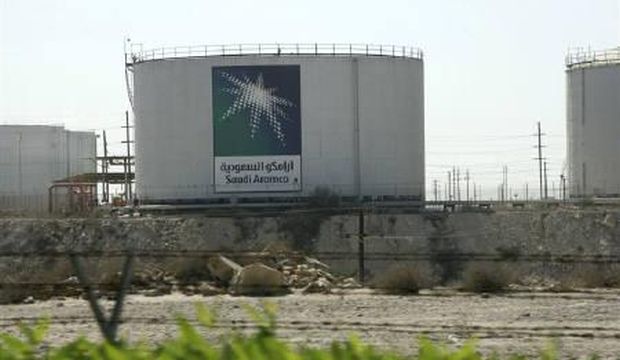
This file photo shows oil tanks at the Saudi Aramco headquarters during a media tour at Dammam, Saudi Arabia, on November 11, 2007. (Reuters/Ali Jareki/Files)
Al-Khobar, Asharq Al-Awsat—After years of operating in Asia through its offices in Hong Kong and South Korea, Saudi Aramco, the Kingdom’s state-owned oil company, is opening a brand new Asian subsidiary, Aramco Asia, setting up shop in the Chinese capital, Beijing.
Structured as a holding company, Aramco Asia will run all its Saudi parent company’s operations in an areas stretching from India in the west to Australia and New Zealand in the east.
According to sources familiar with the plans who spoke to Asharq Al-Awsat on condition of anonymity, the new company will be headed by Ibrahim Al-Buainain, who previously served at Aramco’s offices in Hong Kong and South Korea and headed Saudi Aramco Energy Ventures (SAEV).
SAEV acquired a number of SMEs in the energy sector in the US and elsewhere in a bid to gain more control over international supply chains, especially to the US and Europe.
Al-Buainain also played a crucial role in a number of recent mergers involving Aramco, including Saudi Arabia’s biggest-ever merger, between the Aramco-owned crude oil tanker company Vela and the National Shipping Company of Saudi Arabia (Bahri), which created the world’s fourth-largest oil shipping fleet.
Independent Kuwaiti oil analyst Kamel Al-Harami said the move would give Aramco control of its entire supply chain in one of its biggest markets.
He told Asharq Al-Awsat: “Clearly Aramco has a long-term strategy for Asia, which it will put into effect via this new company.”
He said the new holding company would allow Aramco to consolidate its assets in the Asia–Pacific region, cutting costs and boosting the company’s already healthy market share in the region.
Asia represents one of the most important oil markets for Saudi Arabia. Last year, 68 percent of all Saudi oil exports were bought by Asian countries, according to information from the US Energy Information Administration, while 53.8 percent of Aramco’s crude was sold to Asian buyers, according to Aramco’s 2013 annual report.
OPEC expects demand growth in Asia to boost overall global demand for crude over the next 20 years, as exports to the US slow down in the wake of the shale oil production boom. In its 2013 annual report, released last week, OPEC predicted that the Asia–Pacific region would account for 50 percent of global oil consumption between now and 2040.
The report said the region would up its consumption of crude from 2013’s 11 million barrels per day (bpd) to 30 million bpd by 2040.
OPEC expects Middle Eastern oil producers such as Saudi Arabia to play a crucial role in supplying this expanding appetite for crude from Asia–Pacific countries, forecasting that 20 million bpd of the 30 million bpd consumed by these countries in 2040, or 67 percent of the total, will be supplied by Middle Eastern countries.
Middle Eastern oil suppliers currently provide the Asia–Pacific region with 64 percent of its crude requirements, or 7 million bpd.
As the biggest economy in the region—and, according to many estimates, now the biggest economy in the world—and the world’s biggest energy buyer, China will be the main force behind the energy consumption drive in the region.
Saudi Arabia is China’s biggest supplier of crude oil, covering 19 percent of all Chinese oil imports in 2013, and has been its biggest trading partner in Western Asia and Africa for 12 years running.

Trackbacks/Pingbacks